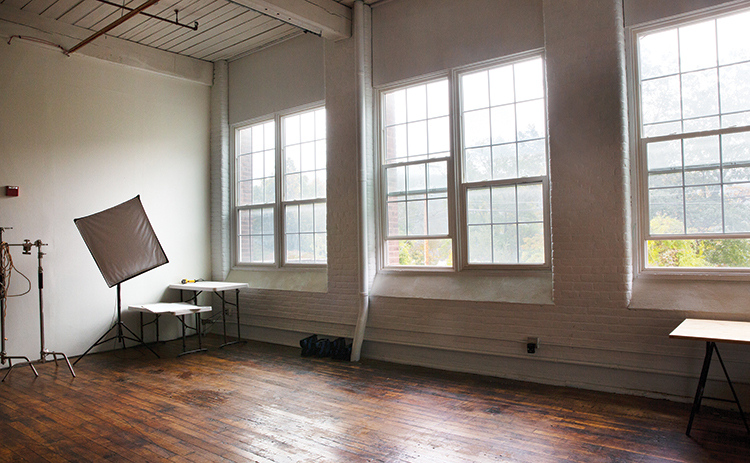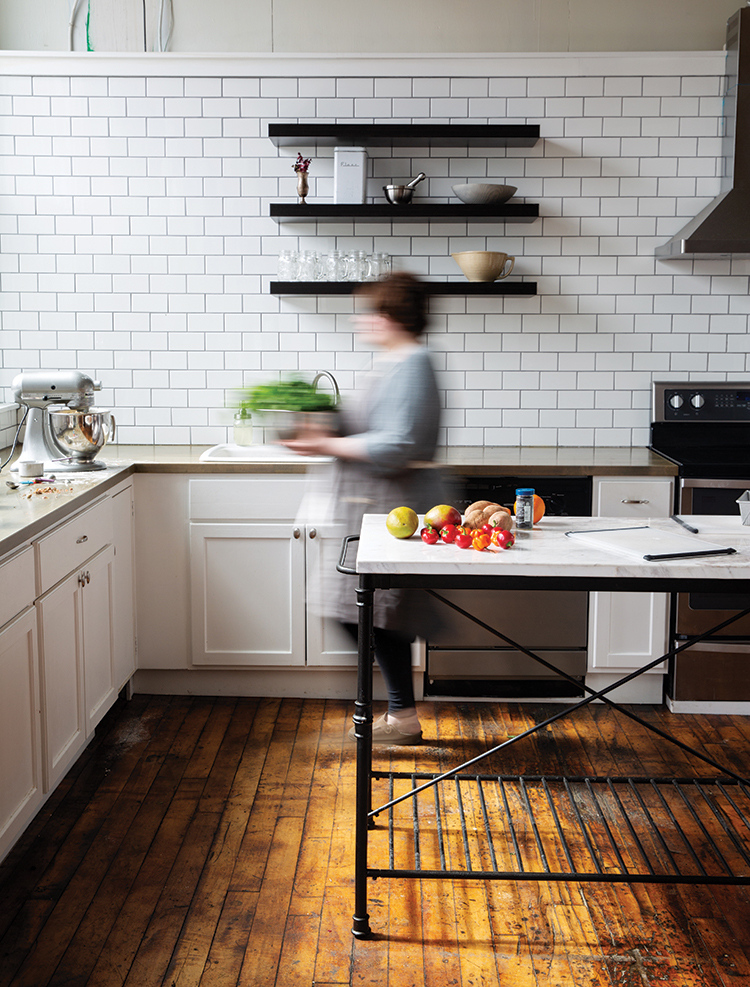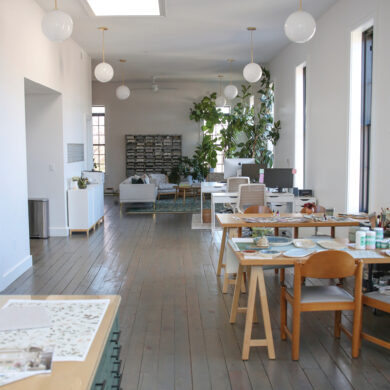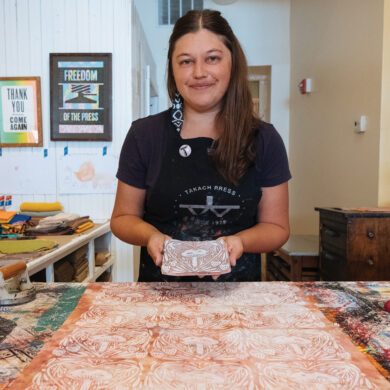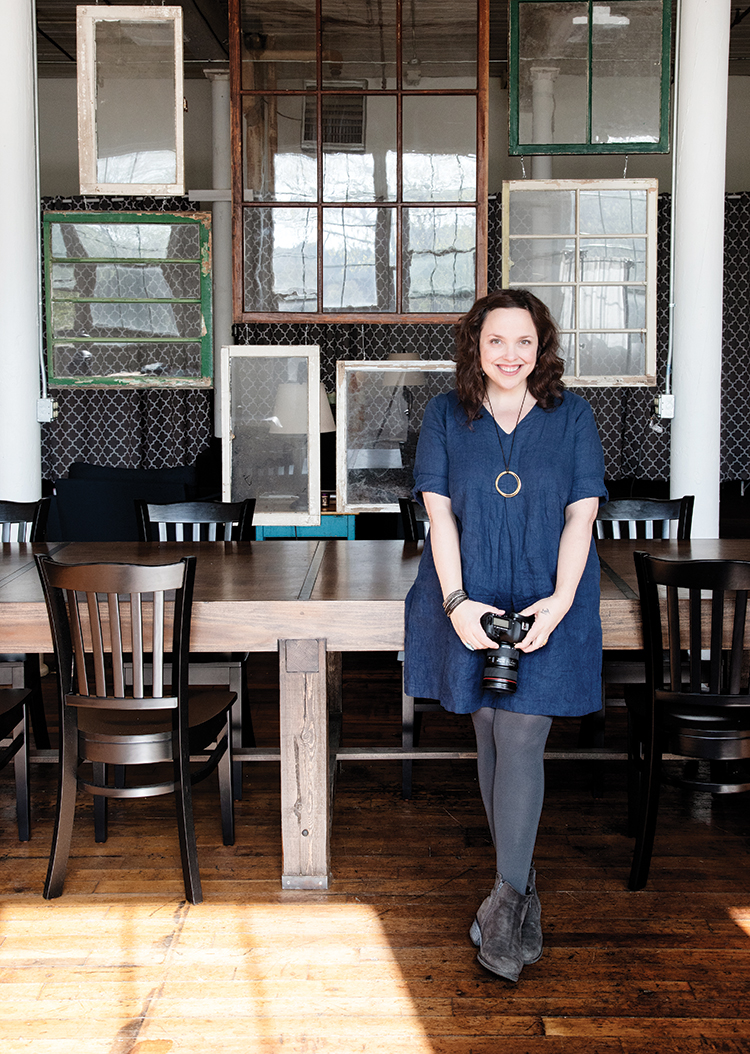
I grew up in the Pacific Northwest, in a suburb of Seattle. My father was a theology teacher at an all-girls Catholic school (which I attended for seven years), and my mother was a CPA. Raising an emotional and creative daughter who initially had lofty dreams of becoming an actress and singer completely baffled both of them, and they weren’t always sure how to support what I wanted to pursue. My father and I, particularly, really struggled in this area. My mom did her best to encourage me in my creative pursuits, even when she didn’t understand them.
My dreams of acting shifted a bit in my teens, after a taste of the brutally critical and competitive world of performing. When I was 15, I took a photography course and fell in love. Photography changed the way I saw the world and gave me something I could share with my dad. He also loved taking photos, and we were able to finally find a common language.
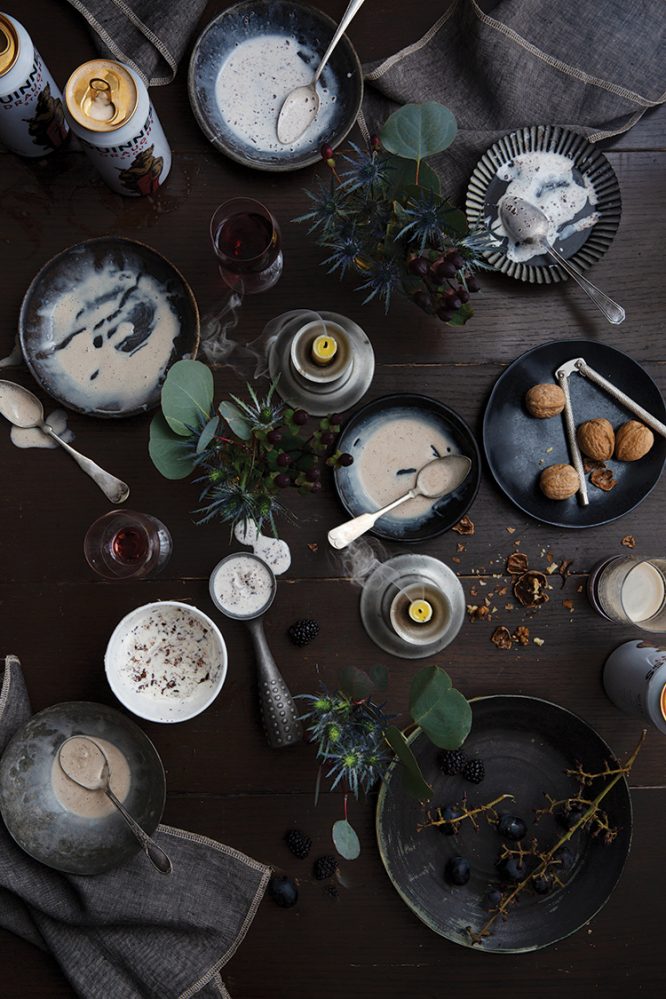
“When thoroughbreds run, they wear blinders to keep their eyes focused straight ahead with no distractions, no other horses. They hear the crowd, but they don’t listen. They just run their own race. That’s what you have to do….just run your own race.”
— Danny Thomas, to his daughter Marlo Thomas
After high school, I opted to stay close to home, attending the University of Washington for a year, though found it to be too big and transferred to an amazing community college in Seattle. I continued with my photography and rented a darkroom space in a building of artist studios. I was in a period of real exploration with my work and was fascinated by the human body, mythology and sensuality—subjects that seemed taboo and rebellious at the time. I ended up creating a series of black and white nudes that eventually earned me a partial scholarship to Cornish College of the Arts as an art major.
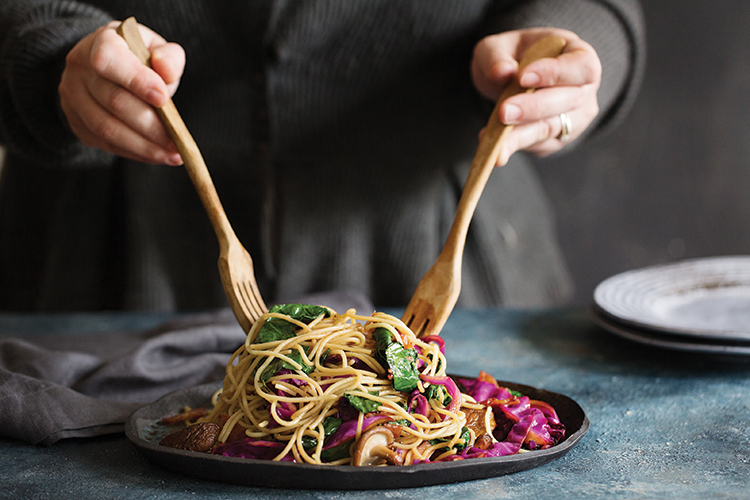
After graduating with a Bachelor of Fine Arts, my biggest goal was to work in my field; I wanted to make art, but I also wanted to make a living doing photography—whatever that looked like. Initially, I was resistant to shooting weddings, so I took those jobs only occasionally while also working on various other jobs, including a brief stint in photo assisting (hated it) and several months working at a photo start-up until the dot-com crash happened. I quickly realized I wasn’t great at working under other people; to get truly excited about anything, I have to feel like it’s my own.
I love the diversity of my work. Some days I am in the kitchen with a chef, traipsing through a field with a farmer or hiking through the forest to document mushroom foraging.
Despite my reservations about shooting weddings, life kept pointing me in that direction. One of my close friends had just started coordinating events at one of Seattle’s biggest hotels, and he promoted my work to his clients. It didn’t take too long for word to spread, and my shooting weddings took off. I soon realized I could make my business into what I wanted it to be—I could market to creative people who were looking for something different than the standard wedding photography.
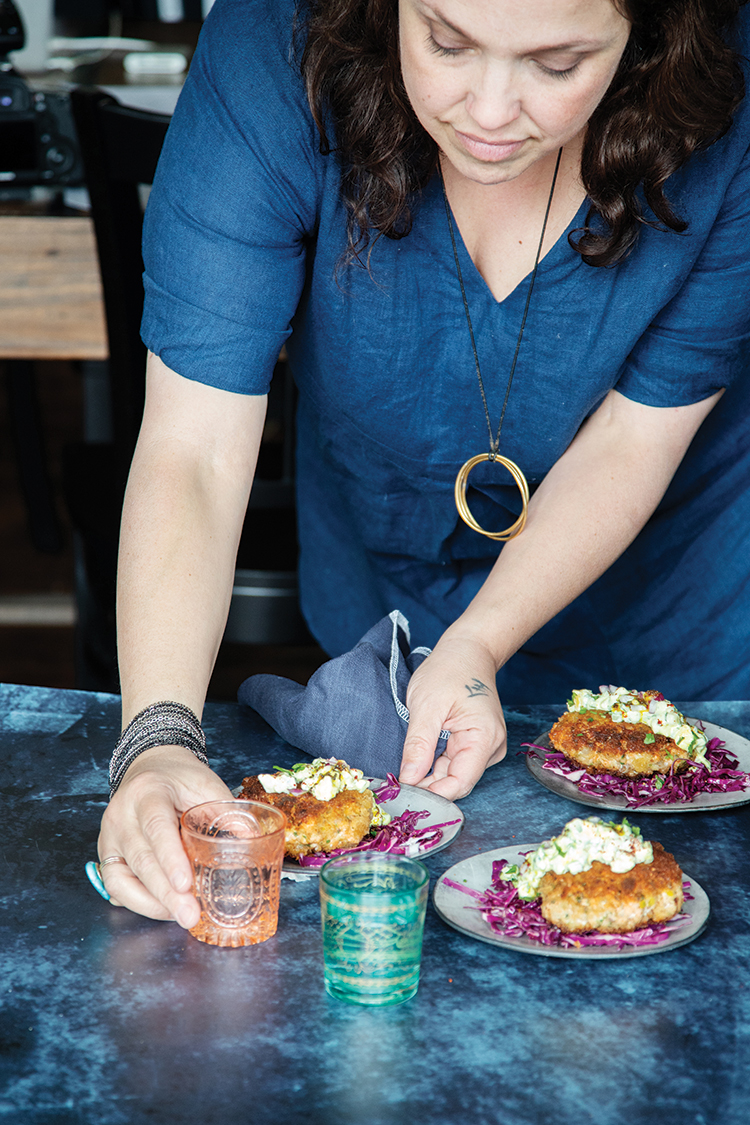
I realized some painful lessons during those early years including the importance of separating my professional and personal life, how to not make excuses to my clients and how to meet deadlines. I also learned how to charge appropriately for my work and how crucial it is to not undercharge; undercharging not only devalues your work, but it also devalues your entire industry.
I continued to shoot weddings for several years but the wedding industry still didn’t really feel like me. In 2008–2009, I was hired to document a small farm on Vashon Island throughout all four seasons, and this is where I found my passion; I loved every single aspect of that job. Witnessing the amount of care and consideration that was put into the growing of food and the raising of animals that would eventually feed people was life-changing for me. I remember telling my husband, “I am done shooting weddings. I just want to photograph farms and food.”
Without totally thinking it through, I decided to stop booking weddings. I renamed and rebranded my business, built a new website and networked with every single person I knew in the food industry. Within about six months, I had signed contracts to shoot three upcoming cookbooks, and I was working with various restaurants in Seattle. It wasn’t all smooth sailing—the recession hit around this time, and my income that first year dropped by almost 50%—but we made it through.
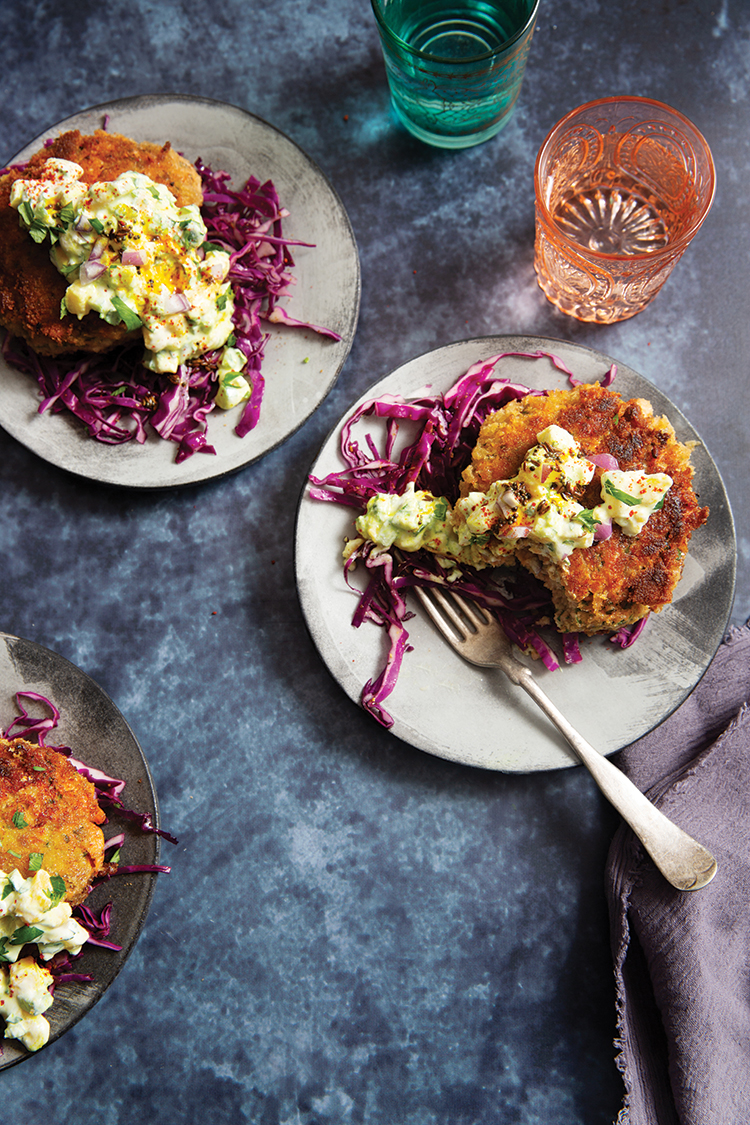
In 2014, I gave birth to my son, Hugo, and for the next couple of years, my world was turned upside down. I had always been able to manifest what I wanted, but after having a baby, I felt like I was hitting one roadblock after another when it came to my business. I couldn’t seem to make progress anywhere. My biggest client discontinued the food branch of their business, and I wasn’t being awarded any of the jobs I bid on. My mother’s health suddenly began to decline. I had a miscarriage. I broke my foot and had to cancel a big shoot that I’d been excited about for months. I was, quite literally, unable to move forward in any real way. I felt angry and defeated.
I knew the universe was trying to tell me something so for one week in May 2016, I hired a sitter and simply focused on being quiet, listening and journaling. What came out of that time was the realization that I needed to make a big change. Seattle didn’t feel like the place to be anymore. I can’t explain it other than I knew it was time to leave. And, the place that kept coming up in my mind, again and again, was Vermont. So, despite all the fears of leaving my hometown, of what it would mean to sell our home and to move my business to the other side of the country, my husband and I put our house on the market and, in September of 2016, moved our family to a funky little town in Southern Vermont.
I’ll be honest. The first year was challenging. I think I had PTSD from all the stress we’d been under. My anxiety was horrible. But, there was also something that felt so obviously RIGHT in the move, and this made the struggles bearable.
I spent the first two years in Vermont flying back to Seattle for shoots, while simultaneously working hard to build my business on the East Coast. Despite being a business owner for two decades, I felt like I was starting over from scratch, but I had a vision, and I believed it could work. In the almost three years I have lived in Vermont, my business has blossomed in ways I couldn’t have imagined, and I now have clients from all over the country. I have a photo studio not far from my house in an awesome old mill building where I offer a full-service experience for my clients. Everything is done in-house: food styling, prop styling, recipe development and video.
There isn’t a day that goes by that I am not grateful that I get to do what I love for a living and can support my family doing it. It’s not all easy, though, and there are always challenges. Trusting the ebb and flow of work is a big one. There are busy periods and slow periods—that never seems to change. Despite knowing this, however, I still panic in a major way at least once a year, convinced my business is failing and my family and I will be on the street, begging for spare change.
Other days, I am in my studio, putting my art degree to work and playing with color, texture and light. At the core of whatever I do, wherever I am, is the desire to tell a story and engage people through striking imagery.
In the years since my decisions to rebrand and move my company, my work has grown and shifted; I’ve shot over two dozen cookbooks, worked with various magazines, restaurants, bakeries and chefs, photographed packaging, food catalogs and commercial campaigns. I also started leading food photography workshops about nine years ago and have found I love teaching and empowering others to embrace their creativity. Nowadays, I am working primarily with food brands and helping them produce regular content for their website and social media platforms.
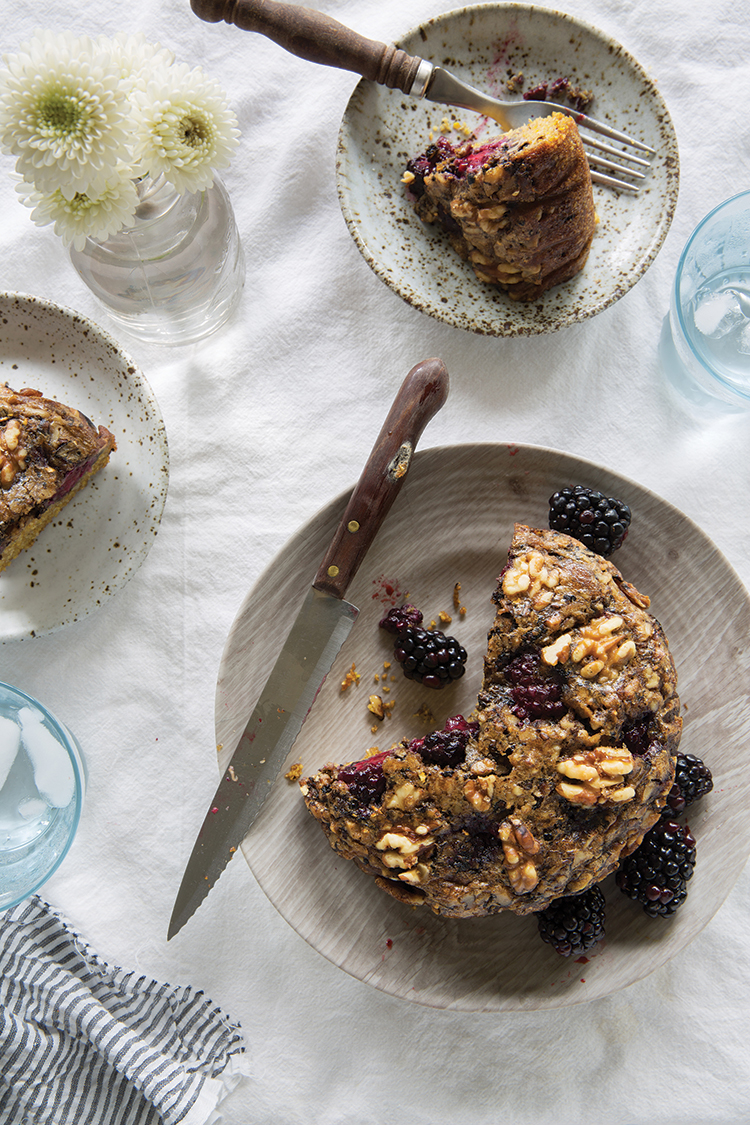
When making decisions about my business, I always come back to the same questions: Is this true? Does this feel like me? Am I trying to be something I am not? Does it make me excited? I am regularly evaluating and fine-tuning what I’m doing by answering these types of questions. At this point in my career, I am less attached to labels, and I don’t need to be called an artist. I don’t need to be a social media star or the world’s greatest food photographer. I just want to live a creative life. If I can live until I am old and gray, and I’m making beautiful things that bring me joy until the very end, then that sounds like a pretty great life to me.
SEEK BALANCE AND DISPLAY YOUR AUTHENTICITY
Devote some time, with limits, to your various social media platforms regularly, scheduling and automating your posts for the week or month ahead of time instead of posting in real-time. This not only leads to more thoughtful posts and higher quality content but also frees you up from being attached to your phone all day long. Too much time on social media is not only a time-suck, but it often leads to envy and self-doubt. Try to find the balance. When I started, social media wasn’t a thing. Now, it’s an essential part of marketing your business but also a potential drain on your time and emotional energy.
Avoid the temptation to copy another person’s work. It’s important to see what other creatives are doing and to keep up on the trends; however, it’s easy to adopt one person’s style as your own without taking the time to figure out what really speaks to you. So, look around, see what types of imagery you respond to, and then experiment! Find your own voice! It’s okay to be influenced by others— we ALL are—but your voice is unique. Spend some time developing it.
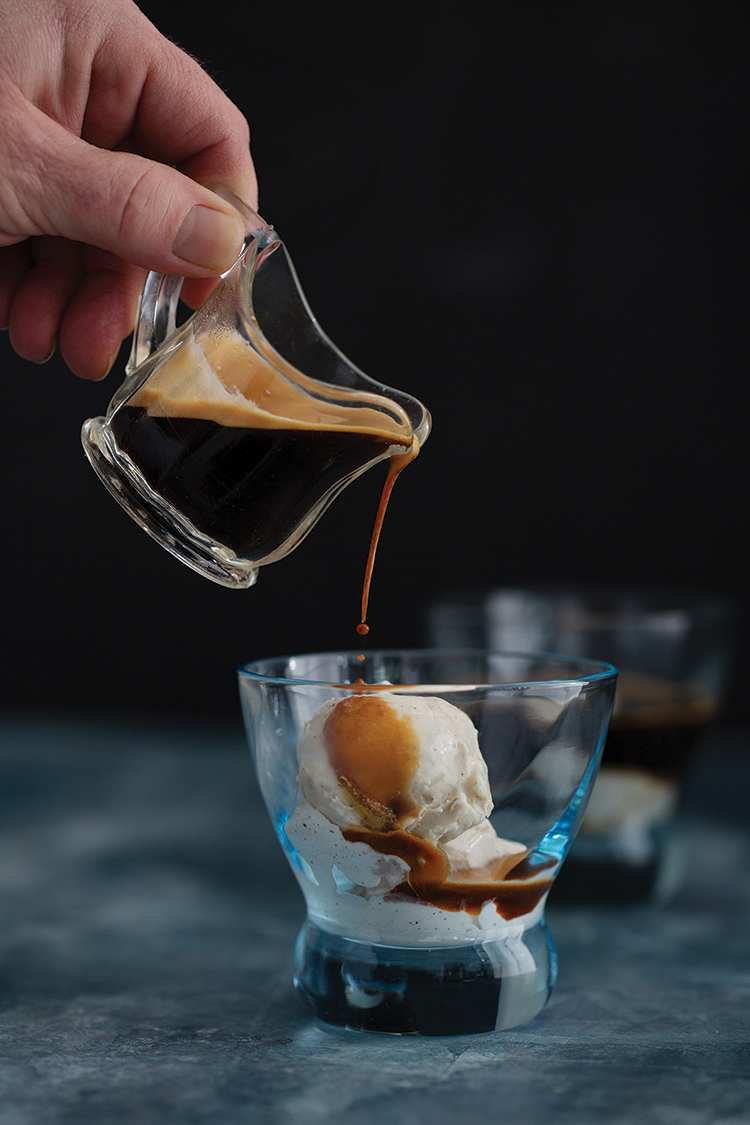
Take other people’s well-intended advice with a grain of salt. Sometimes, the advice is timely and very relevant to your business. Other times, it’s not. For example, when I first started shooting weddings over 20 years ago, I was told by countless people that I needed to have a medium format camera or my business would fail. In my gut, I knew that wasn’t true. I sensed that clients were looking for more candid moments in their wedding photographs and that a 35 mm camera would be sufficient. I was right. Not once during the several hundred weddings that I photographed was a medium format camera needed. If people discourage you from creating the business you want, 99% of the time it’s because they are dissatisfied with their own career choices and are threatened by those daring enough to pursue their passion. Thank them for their thoughts and move on.
Be real. In this world of social media, authenticity is a rare commodity, and those who stay true to themselves stand out. Almost all of the clients you book will be due, in at least some part, to YOU—your personality, your voice, your sense of humor (or lack of one) and your ability to make people feel comfortable. Clients are not only looking for talent, but they are also looking for someone they LIKE; someone they relate to. Part of what you are selling is yourself, so show the world your true colors.
BEST ADVICE FOR BREAKING INTO PHOTOGRAPHY
PLEASE do not work for free! I understand the temptation to do so while you are building a clientele; however, every time you do this, it sends a clear message that your time and experience are worth nothing. Additionally, it devalues your entire industry. People in creative industries have to work extra hard to be taken seriously, and we all need to be consistent in the message that our time and skills are valuable.
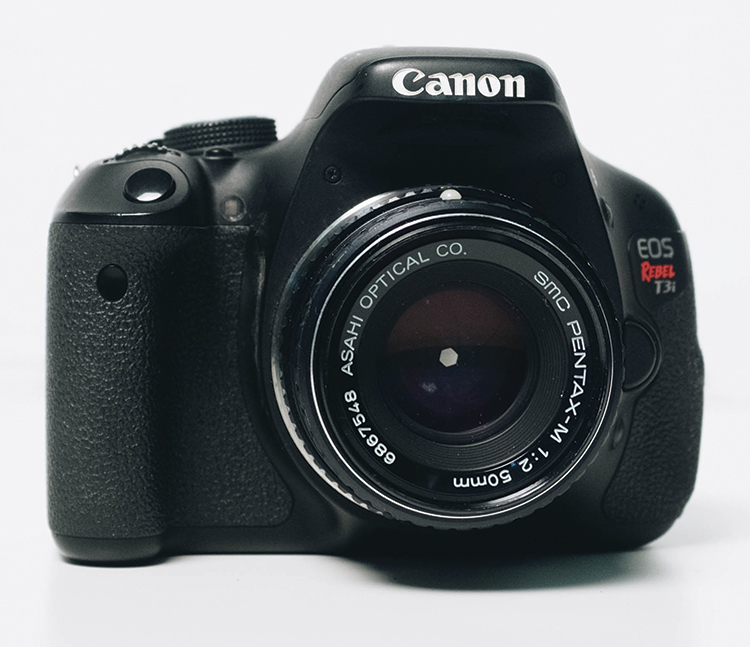
As you are starting out, there are many ways you can build a portfolio without actually taking on jobs and charging nothing. If you are wanting to shoot food, for example, set up stilllifes of beautiful produce and shoot those. Shoot and style the meals you make at home or take photographs at your local farmers market. If you are interested in portraiture, recruit your friends and family and experiment with various types of lighting and settings. Once you have a portfolio you are happy with, research to figure out the appropriate rates to charge for your skill level and stick with that as you start booking work.
COPYRIGHT FOR PHOTOGRAPHERS
Copyright is an exclusive right that is automatically assigned to the creator at the moment the work is created. It is defined as “a person’s exclusive right to reproduce, publish or sell his or her original work of authorship.” As a photographer, this means that the moment you capture an image, the copyright to that image belongs to you. The only exception to this is when you have a specific legal arrangement to take the photographs for somebody else (under a work for hire arrangement for example), but this must exist in advance or else a legally binding document must be created that transfers the copyright from the photographer, once they have captured the images. For further information concerning copyrighting your photography go to: www.DIYPhotography.net.

I grew up in the Pacific Northwest, in a suburb of Seattle. My father was a theology teacher at an all-girls Catholic school (which I attended for seven years), and my mother was a CPA. Raising an emotional and creative daughter who initially had lofty dreams of becoming an actress and singer completely baffled both of them, and they weren’t always sure how to support what I wanted to pursue. My father and I, particularly, really struggled in this area. My mom did her best to encourage me in my creative pursuits, even when she didn’t understand them.
My dreams of acting shifted a bit in my teens, after a taste of the brutally critical and competitive world of performing. When I was 15, I took a photography course and fell in love. Photography changed the way I saw the world and gave me something I could share with my dad. He also loved taking photos, and we were able to finally find a common language.

“When thoroughbreds run, they wear blinders to keep their eyes focused straight ahead with no distractions, no other horses. They hear the crowd, but they don’t listen. They just run their own race. That’s what you have to do….just run your own race.”
— Danny Thomas, to his daughter Marlo Thomas
After high school, I opted to stay close to home, attending the University of Washington for a year, though found it to be too big and transferred to an amazing community college in Seattle. I continued with my photography and rented a darkroom space in a building of artist studios. I was in a period of real exploration with my work and was fascinated by the human body, mythology and sensuality—subjects that seemed taboo and rebellious at the time. I ended up creating a series of black and white nudes that eventually earned me a partial scholarship to Cornish College of the Arts as an art major.

After graduating with a Bachelor of Fine Arts, my biggest goal was to work in my field; I wanted to make art, but I also wanted to make a living doing photography—whatever that looked like. Initially, I was resistant to shooting weddings, so I took those jobs only occasionally while also working on various other jobs, including a brief stint in photo assisting (hated it) and several months working at a photo start-up until the dot-com crash happened. I quickly realized I wasn’t great at working under other people; to get truly excited about anything, I have to feel like it’s my own.
I love the diversity of my work. Some days I am in the kitchen with a chef, traipsing through a field with a farmer or hiking through the forest to document mushroom foraging.
Despite my reservations about shooting weddings, life kept pointing me in that direction. One of my close friends had just started coordinating events at one of Seattle’s biggest hotels, and he promoted my work to his clients. It didn’t take too long for word to spread, and my shooting weddings took off. I soon realized I could make my business into what I wanted it to be—I could market to creative people who were looking for something different than the standard wedding photography.

I realized some painful lessons during those early years including the importance of separating my professional and personal life, how to not make excuses to my clients and how to meet deadlines. I also learned how to charge appropriately for my work and how crucial it is to not undercharge; undercharging not only devalues your work, but it also devalues your entire industry.
I continued to shoot weddings for several years but the wedding industry still didn’t really feel like me. In 2008–2009, I was hired to document a small farm on Vashon Island throughout all four seasons, and this is where I found my passion; I loved every single aspect of that job. Witnessing the amount of care and consideration that was put into the growing of food and the raising of animals that would eventually feed people was life-changing for me. I remember telling my husband, “I am done shooting weddings. I just want to photograph farms and food.”
Without totally thinking it through, I decided to stop booking weddings. I renamed and rebranded my business, built a new website and networked with every single person I knew in the food industry. Within about six months, I had signed contracts to shoot three upcoming cookbooks, and I was working with various restaurants in Seattle. It wasn’t all smooth sailing—the recession hit around this time, and my income that first year dropped by almost 50%—but we made it through.

In 2014, I gave birth to my son, Hugo, and for the next couple of years, my world was turned upside down. I had always been able to manifest what I wanted, but after having a baby, I felt like I was hitting one roadblock after another when it came to my business. I couldn’t seem to make progress anywhere. My biggest client discontinued the food branch of their business, and I wasn’t being awarded any of the jobs I bid on. My mother’s health suddenly began to decline. I had a miscarriage. I broke my foot and had to cancel a big shoot that I’d been excited about for months. I was, quite literally, unable to move forward in any real way. I felt angry and defeated.
I knew the universe was trying to tell me something so for one week in May 2016, I hired a sitter and simply focused on being quiet, listening and journaling. What came out of that time was the realization that I needed to make a big change. Seattle didn’t feel like the place to be anymore. I can’t explain it other than I knew it was time to leave. And, the place that kept coming up in my mind, again and again, was Vermont. So, despite all the fears of leaving my hometown, of what it would mean to sell our home and to move my business to the other side of the country, my husband and I put our house on the market and, in September of 2016, moved our family to a funky little town in Southern Vermont.
I’ll be honest. The first year was challenging. I think I had PTSD from all the stress we’d been under. My anxiety was horrible. But, there was also something that felt so obviously RIGHT in the move, and this made the struggles bearable.
I spent the first two years in Vermont flying back to Seattle for shoots, while simultaneously working hard to build my business on the East Coast. Despite being a business owner for two decades, I felt like I was starting over from scratch, but I had a vision, and I believed it could work. In the almost three years I have lived in Vermont, my business has blossomed in ways I couldn’t have imagined, and I now have clients from all over the country. I have a photo studio not far from my house in an awesome old mill building where I offer a full-service experience for my clients. Everything is done in-house: food styling, prop styling, recipe development and video.
There isn’t a day that goes by that I am not grateful that I get to do what I love for a living and can support my family doing it. It’s not all easy, though, and there are always challenges. Trusting the ebb and flow of work is a big one. There are busy periods and slow periods—that never seems to change. Despite knowing this, however, I still panic in a major way at least once a year, convinced my business is failing and my family and I will be on the street, begging for spare change.
Other days, I am in my studio, putting my art degree to work and playing with color, texture and light. At the core of whatever I do, wherever I am, is the desire to tell a story and engage people through striking imagery.
In the years since my decisions to rebrand and move my company, my work has grown and shifted; I’ve shot over two dozen cookbooks, worked with various magazines, restaurants, bakeries and chefs, photographed packaging, food catalogs and commercial campaigns. I also started leading food photography workshops about nine years ago and have found I love teaching and empowering others to embrace their creativity. Nowadays, I am working primarily with food brands and helping them produce regular content for their website and social media platforms.

When making decisions about my business, I always come back to the same questions: Is this true? Does this feel like me? Am I trying to be something I am not? Does it make me excited? I am regularly evaluating and fine-tuning what I’m doing by answering these types of questions. At this point in my career, I am less attached to labels, and I don’t need to be called an artist. I don’t need to be a social media star or the world’s greatest food photographer. I just want to live a creative life. If I can live until I am old and gray, and I’m making beautiful things that bring me joy until the very end, then that sounds like a pretty great life to me.
SEEK BALANCE AND DISPLAY YOUR AUTHENTICITY
Devote some time, with limits, to your various social media platforms regularly, scheduling and automating your posts for the week or month ahead of time instead of posting in real-time. This not only leads to more thoughtful posts and higher quality content but also frees you up from being attached to your phone all day long. Too much time on social media is not only a time-suck, but it often leads to envy and self-doubt. Try to find the balance. When I started, social media wasn’t a thing. Now, it’s an essential part of marketing your business but also a potential drain on your time and emotional energy.
Avoid the temptation to copy another person’s work. It’s important to see what other creatives are doing and to keep up on the trends; however, it’s easy to adopt one person’s style as your own without taking the time to figure out what really speaks to you. So, look around, see what types of imagery you respond to, and then experiment! Find your own voice! It’s okay to be influenced by others— we ALL are—but your voice is unique. Spend some time developing it.

Take other people’s well-intended advice with a grain of salt. Sometimes, the advice is timely and very relevant to your business. Other times, it’s not. For example, when I first started shooting weddings over 20 years ago, I was told by countless people that I needed to have a medium format camera or my business would fail. In my gut, I knew that wasn’t true. I sensed that clients were looking for more candid moments in their wedding photographs and that a 35 mm camera would be sufficient. I was right. Not once during the several hundred weddings that I photographed was a medium format camera needed. If people discourage you from creating the business you want, 99% of the time it’s because they are dissatisfied with their own career choices and are threatened by those daring enough to pursue their passion. Thank them for their thoughts and move on.
Be real. In this world of social media, authenticity is a rare commodity, and those who stay true to themselves stand out. Almost all of the clients you book will be due, in at least some part, to YOU—your personality, your voice, your sense of humor (or lack of one) and your ability to make people feel comfortable. Clients are not only looking for talent, but they are also looking for someone they LIKE; someone they relate to. Part of what you are selling is yourself, so show the world your true colors.
BEST ADVICE FOR BREAKING INTO PHOTOGRAPHY
PLEASE do not work for free! I understand the temptation to do so while you are building a clientele; however, every time you do this, it sends a clear message that your time and experience are worth nothing. Additionally, it devalues your entire industry. People in creative industries have to work extra hard to be taken seriously, and we all need to be consistent in the message that our time and skills are valuable.

As you are starting out, there are many ways you can build a portfolio without actually taking on jobs and charging nothing. If you are wanting to shoot food, for example, set up stilllifes of beautiful produce and shoot those. Shoot and style the meals you make at home or take photographs at your local farmers market. If you are interested in portraiture, recruit your friends and family and experiment with various types of lighting and settings. Once you have a portfolio you are happy with, research to figure out the appropriate rates to charge for your skill level and stick with that as you start booking work.
COPYRIGHT FOR PHOTOGRAPHERS
Copyright is an exclusive right that is automatically assigned to the creator at the moment the work is created. It is defined as “a person’s exclusive right to reproduce, publish or sell his or her original work of authorship.” As a photographer, this means that the moment you capture an image, the copyright to that image belongs to you. The only exception to this is when you have a specific legal arrangement to take the photographs for somebody else (under a work for hire arrangement for example), but this must exist in advance or else a legally binding document must be created that transfers the copyright from the photographer, once they have captured the images. For further information concerning copyrighting your photography go to: www.DIYPhotography.net.










